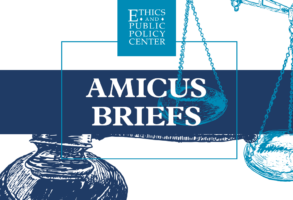Published August 19, 2014
The Ferguson, Mo., police department released convenience-store surveillance tape that showed Michael Brown allegedly stealing some cigars minutes before he was shot by a police officer. Aware that the release of this footage might look like posthumous character assassination of the shooting victim, Chief Ronald Johnson of the Ferguson police explained that the tape was released pursuant to media requests.
Maybe, though the behavior of the police in other respects doesn’t exactly scream respect for the fourth estate. Journalists from the Washington Post and the Huffington Post were arrested, and a team from Al Jazeera was tear-gassed.
There should have been video of what happened outside that patrol car.
Conservatives incline to support law enforcement. We dread disorder and respect the rule of law (a big subject, and relevant to the critique of the Obama White House, but that’s for another day). But we are also, or should be, aware of the temptations of power, and wary of its abuse.
There’s a video of Brown aggressively shoving a store clerk, but no record of what transpired a few minutes later when a police officer encountered him and a friend walking down the middle of the street. The police account is that Brown struggled with Officer Darren Wilson over the policeman’s gun and that the first shot was fired in the cruiser. Brown’s friend alleges that Brown was shot when he had his hands in the air. There is no dispute that Brown was unarmed when he was killed.
The Ferguson tragedy has provoked discussion of the excessive militarization of our police (a topic I mentioned a month or so ago in a column about our law-barnacled country). Actors often say that they can’t get into character until they don the costume — attach the fake nose or mustache. It’s easy to believe that something of the same effect happens when police gear up in opaque helmets, gas masks, body armor, and heavy weaponry. If you’re dressed and equipped like a special-ops combat soldier, you’re more inclined to behave like one. But against whom?
Still, the initial fatal violence in Ferguson happened in the absence of military gear. It was an ordinary encounter between an officer and a civilian that escalated in a matter of minutes into a shooting. This is where the conservative insight about abuse of power is relevant. As Lord Acton warned, “Power tends to corrupt, and absolute power corrupts absolutely.” Police have tremendous power. Most don’t abuse it. But some do.
Let’s begin the overdue process of demilitarizing our police. The armored personnel carriers and heavy weaponry have no place on city streets unless we are suffering prolonged rioting — in which case the National Guard can be called upon.
Beyond that, a technical solution is readily available: cameras, cameras, and more cameras. I wrote last year that cameras should be ubiquitous in prisons because the temptation to brutality by prison guards who are unobserved is tremendous. The same is true of police.
The Wall Street Journal reports that in Rialto, Calif., the number of citizen complaints against police declined from 24 to 3 in the first year officers began wearing cameras on their chests. Use of force incidents dropped from 61 to 25. Wearable cameras are being tested in New Orleans, Los Angeles, and Las Vegas. As Rialto’s police chief explained: “When you talk about putting a camera on somebody, human nature is going to dictate that you’re going to mind your p’s and q’s and you’re going to be on the best behavior. At the same time, I think it’s had an impact on citizens. If they know you’re wearing a camera, they too will be on their best behavior.”
Violence and brutality arise from the complex stew of human weaknesses. Cameras cannot repeal aggression, bias, rage, or stupidity — but they can certainly diminish them. And with cameras, justice for the guilty — cop or civilian — is more attainable.
— Mona Charen is a nationally syndicated columnist and a senior fellow at the Ethics and Public Policy Center. © 2014 Creators Syndicate, Inc.







